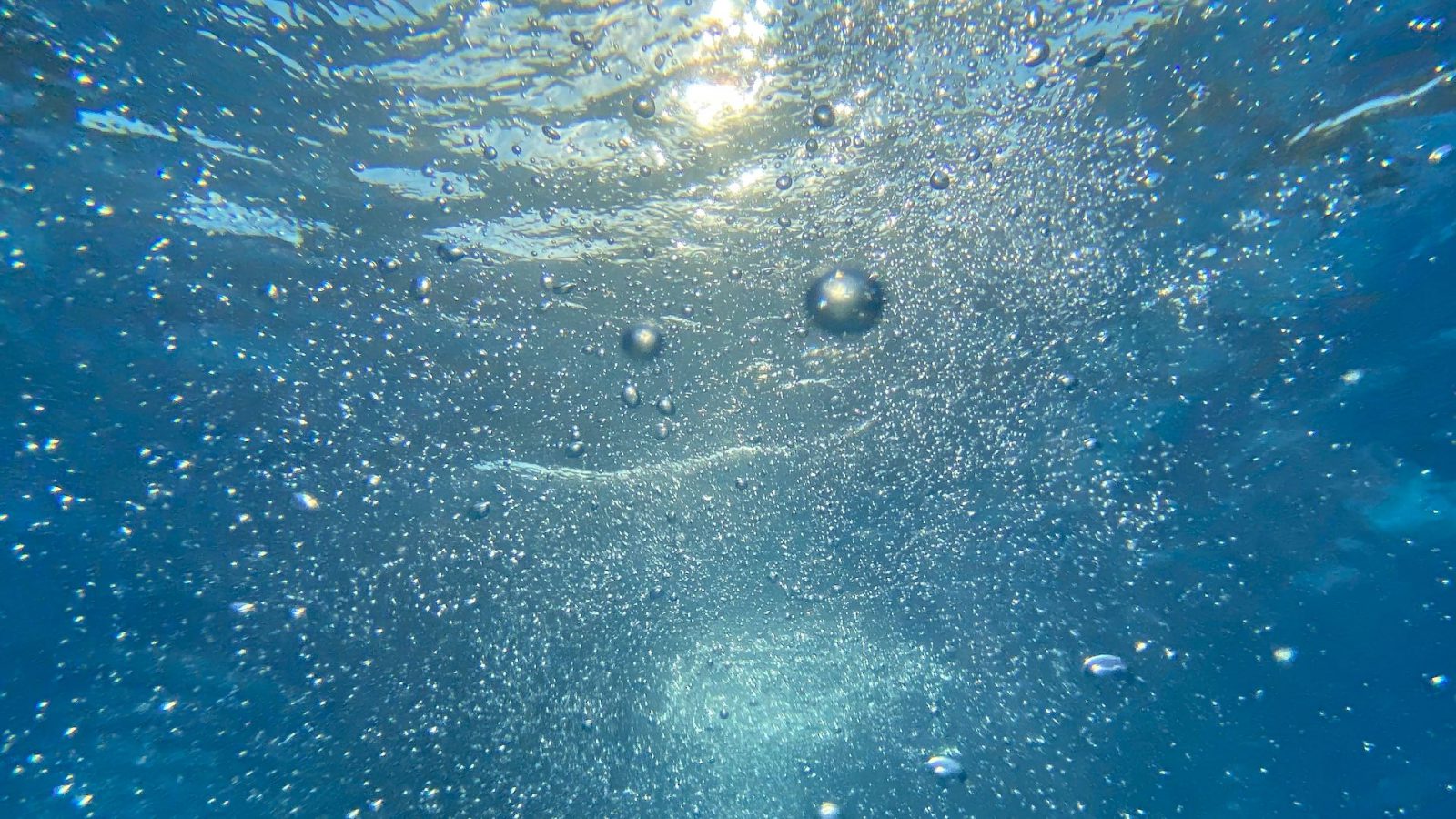
Four Ways To Introduce Dissolved Oxygen Into Your Waterbody
Lakes and ponds help us manage stormwater, yield drinking water, provide fishing and recreation opportunities, and maintain beauty in our communities. But ongoing management is necessary to ensure they continue to function properly and remain healthy. To maintain a balanced waterbody, one crucial element needs to be present: oxygen. One management tool professionals have relied on for decades to introduce oxygen into waterbodies is aeration. Oxygenation can be achieved with several types of aeration equipment:
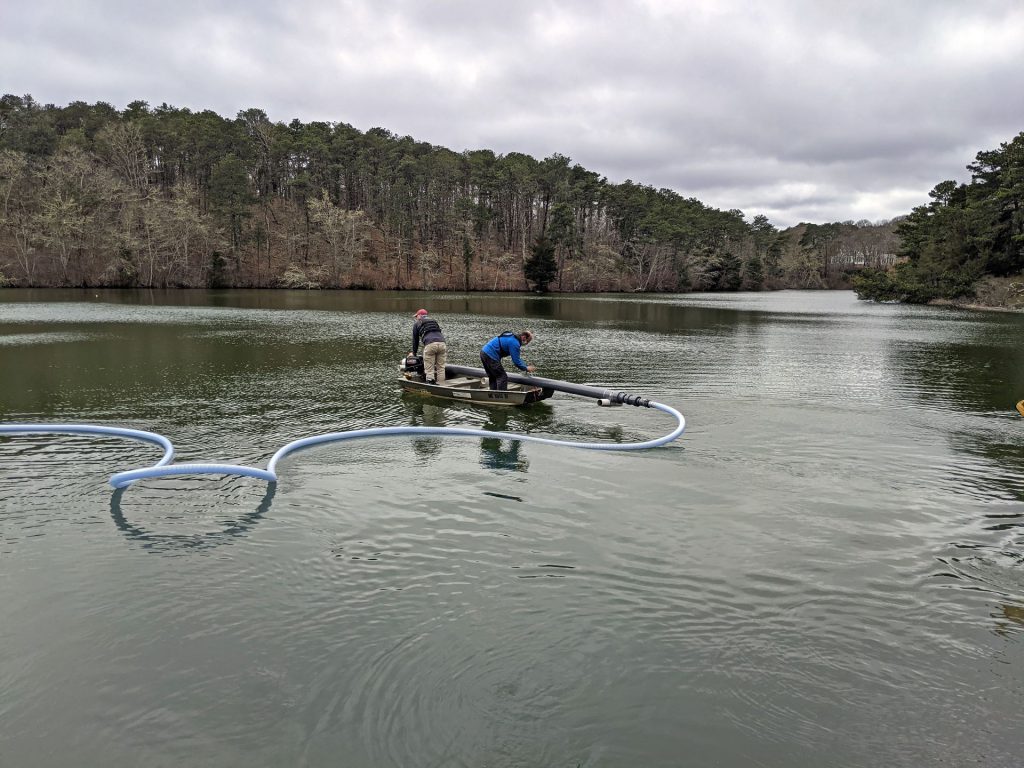
1. Oxygen Saturation Technology (OST)
A new and exciting industry innovation is Oxygen Saturation Technology (OST). Unlike other solutions, this tool targets lake anoxia and water quality problems at the source — the sediment. This premium water quality management solution injects oxygen directly into the water which allows the oxygen to stay in solution and disperse, blanketing lake sediments with high levels of oxygen. Furthermore, this system can introduce oxygen at a specified depth without impacting the thermal stratification or layers of colder water. This allows for oxygen to be placed, and stay where it is needed most at the sediment-water interface.
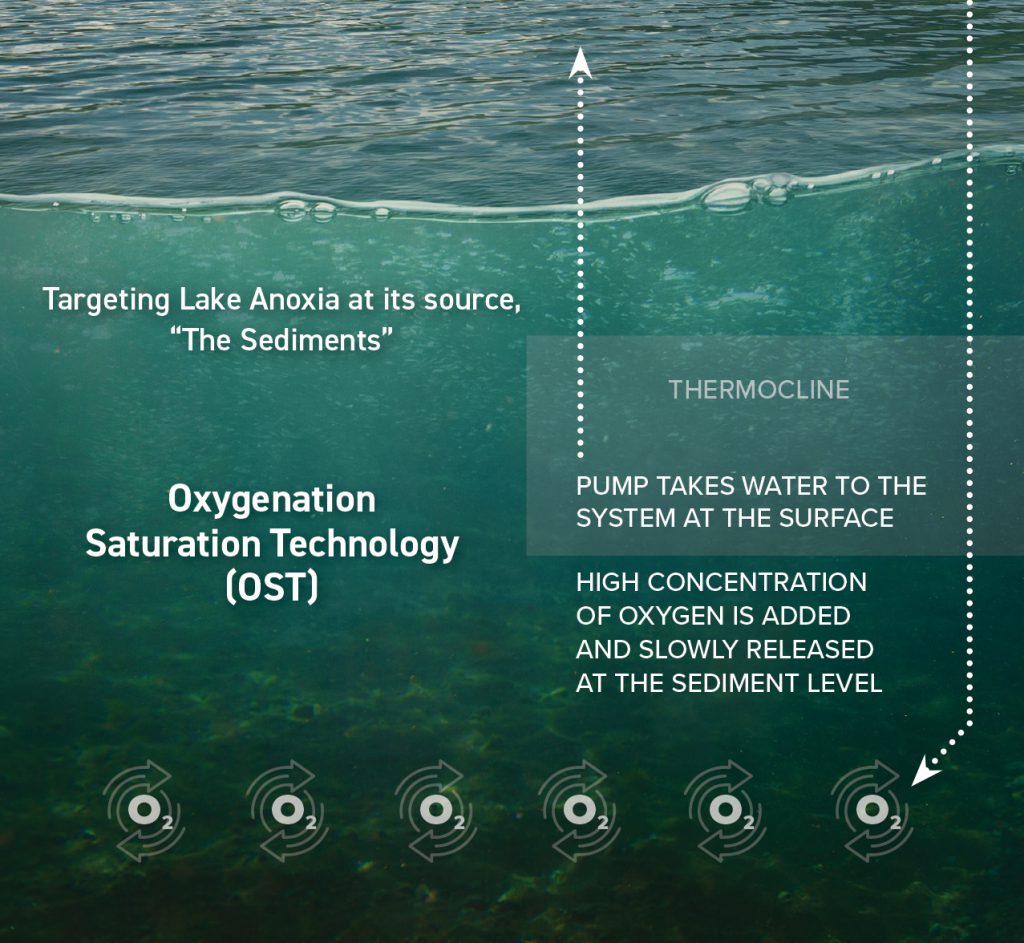
How OST Works:
This game-changing technology adds five to ten times the amount of oxygen compared to traditional aeration systems with comparable or often times lower electrical costs. OST helps reduce the reliance on chemicals, with the potential for no herbicide use over an entire season. This innovation also has the capability to reduce or even eliminate organic muck build-up at the bottom of lakes and ponds.
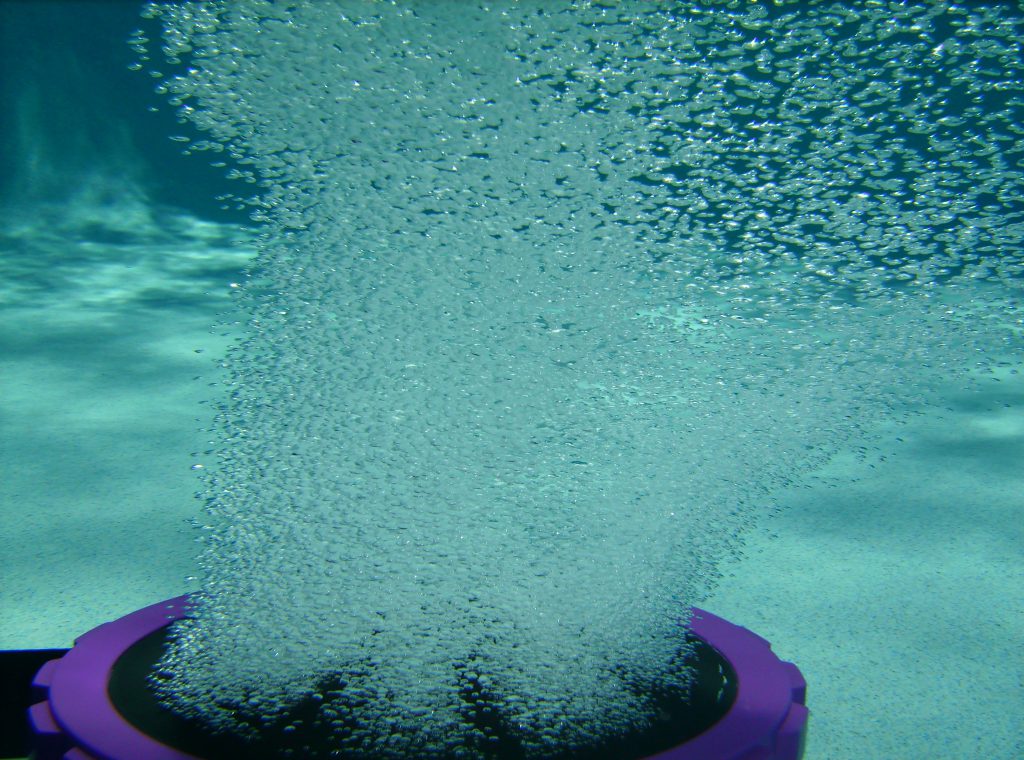
2. Submersed Aerators
Submersed aerators, on the other hand, provide aeration through circulation. Compressed air is pumped through diffusers placed on the lake or pond bottom. As bubbles rise, they circulate the water and bring bottom water with low oxygen levels to the surface where oxygen can be absorbed. This circulation pattern mixes the water and provides oxygen at lower depths.
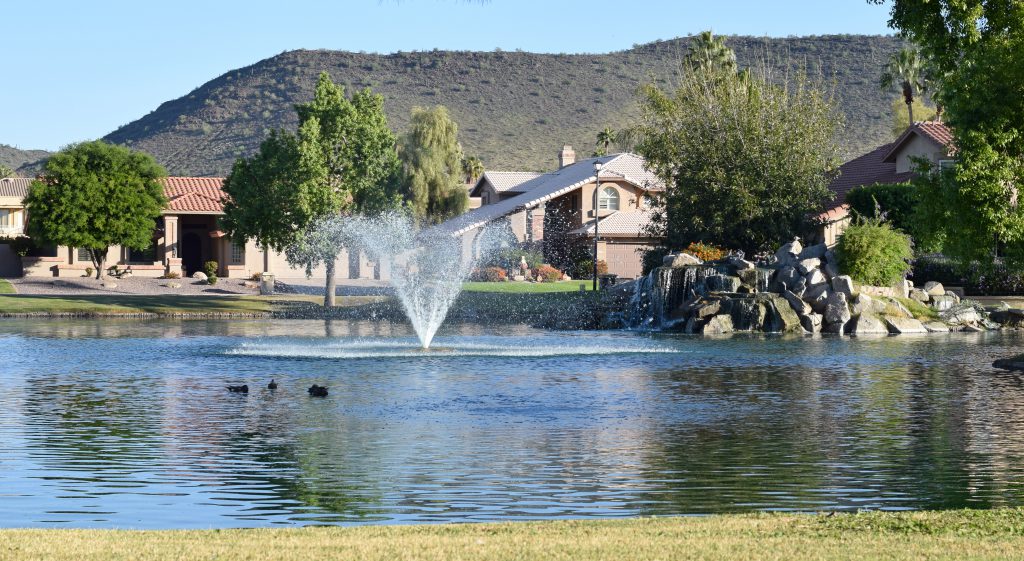
3. Floating Fountains
Floating fountains spray water with pleasing patterns into the air. As the water falls across the surface, it creates turbulence that facilitates the transmission of oxygen into the water column while allowing submersed gasses to escape. Fountains provide multi-faceted benefits and can even be adorned with lighting for added beauty. When it comes to oxygenation, fountains are most beneficial in shallower waterbodies.
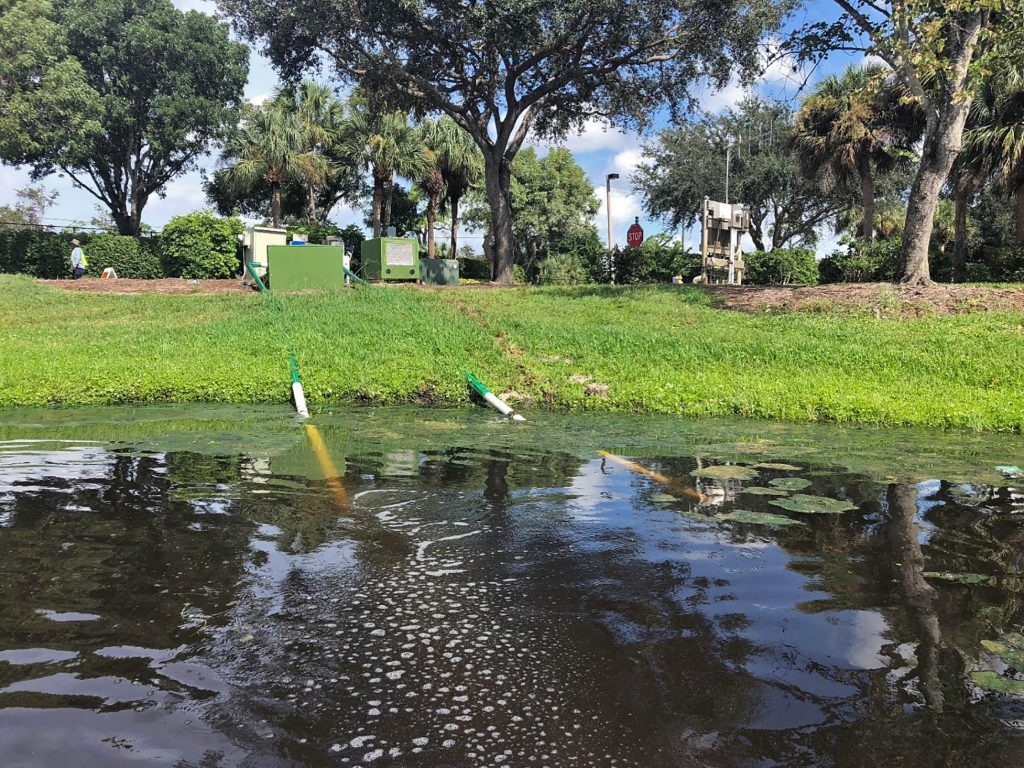
4. Nanobubble Technology
Nanobubble Technology systems pump water out of the lake or pond, inject it with nanobubbles and then release the water into the waterbody. Nanobubbles are microscopic—so small that they do not rise to the surface; instead, they drift and eventually dissolve, releasing oxygen after several days or weeks. Nanobubble treatments are best suited for smaller, shallow waterbodies (approximately 3 acres or less). Each of these tools functions in different ways, but they are all designed to cultivate a well-balanced waterbody.
In Summary, Dissolved Oxygen Is Crucial
So, what does an oxygen-rich waterbody look like? Oxygen creates water quality conditions that help neutralize phosphorus and nitrogen — common nutrients that, in excess, can pollute our valuable water resources. Lakes and ponds with more balanced water quality conditions are less hospitable to algae and nuisance weed growth. In turn, this prevents the release of potential algal toxins, limits the development of bottom muck and bad odors, and supports the proliferation of beneficial microbes, zooplankton, native fish, and other healthy aquatic life.
Aeration is a crucial tool in our toolbox of sustainable solutions — which also includes scientific laboratories, drone technology, highly-targeted herbicides, and more — but it alone cannot keep your waterbody balanced. Every aquatic ecosystem is different and requires a unique combination of strategies to achieve the trifecta of health, beauty, and functionality. The most efficient and budget-friendly way to achieve your goals is through an annual management program, which leans on an entire toolbox of solutions so that your waterbody receives the most effective and customized care all year round.
Who We Are
At SOLitude Lake Management we’re dedicated to making water a more healthy and beautiful part of our environment and our world. In that pursuit we offer sustainable, comprehensive lake and pond management solutions.
SOLitude Lake Management is a nationwide environmental firm committed to providing sustainable solutions that improve water quality, enhance beauty, preserve natural resources and reduce our environmental footprint. SOLitude’s team of aquatic resource management professionals specializes in the development and execution of customized lake, pond, wetland, and fisheries management programs that include water quality testing and restoration, nutrient remediation, algae, and aquatic weed control, installation and maintenance of fountains and aeration systems, bathymetry, shoreline erosion restoration, mechanical harvesting and hydro-raking, lake vegetation studies, biological assessments, habitat evaluations, and invasive species management. Services and educational resources are available to clients nationwide, including homeowners associations, multi-family and apartment communities, golf courses, commercial developments, ranches, private landowners, reservoirs, recreational and public lakes, municipalities, drinking water authorities, parks, and state and federal agencies. SOLitude Lake Management is a proud member of the Rentokil Steritech family of companies in North America.









